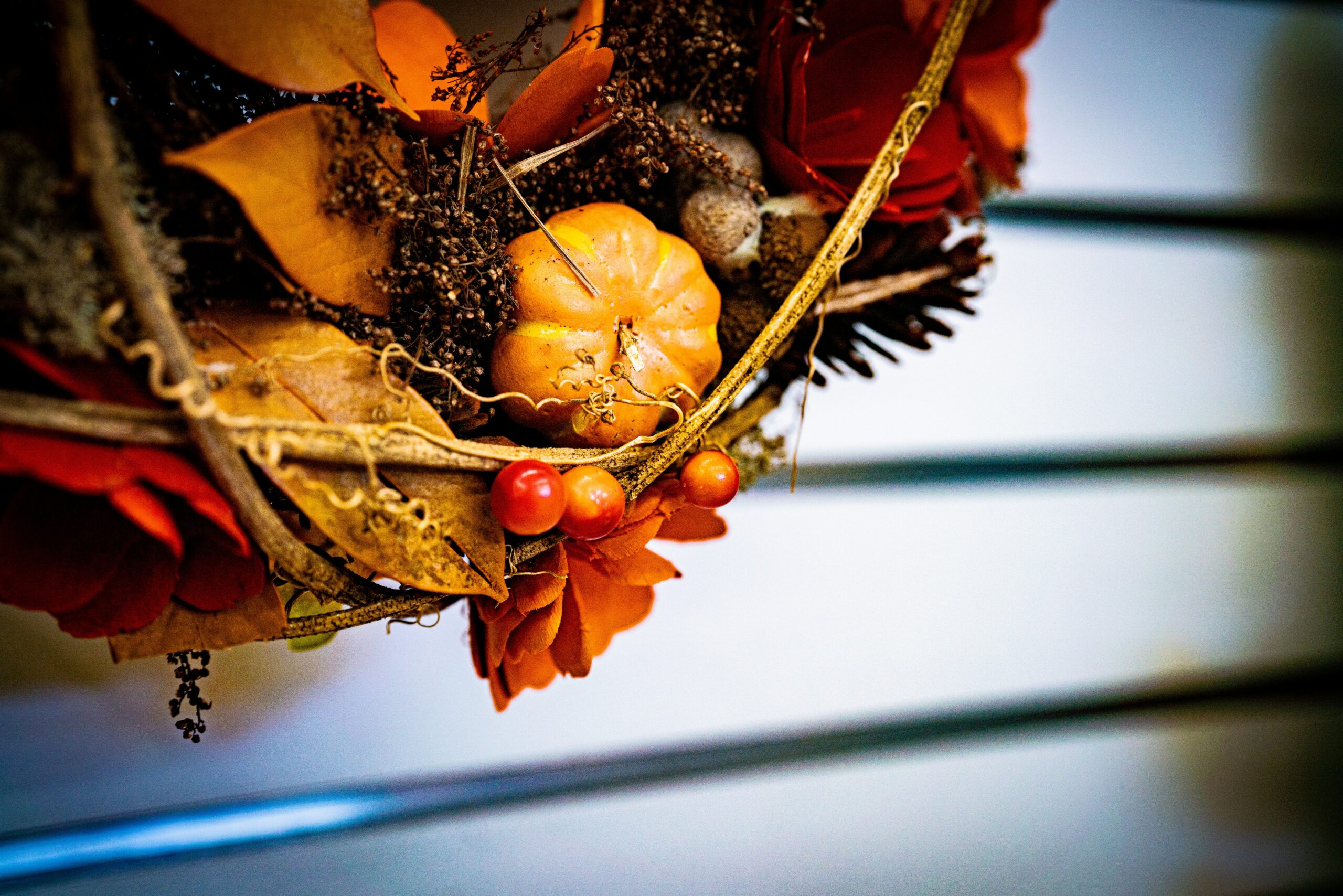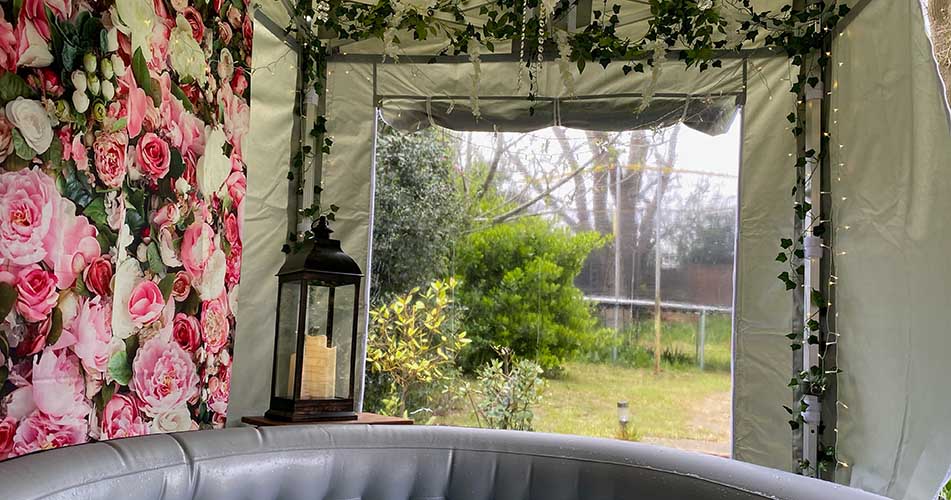The Complete Spring Gardening Checklist 2024
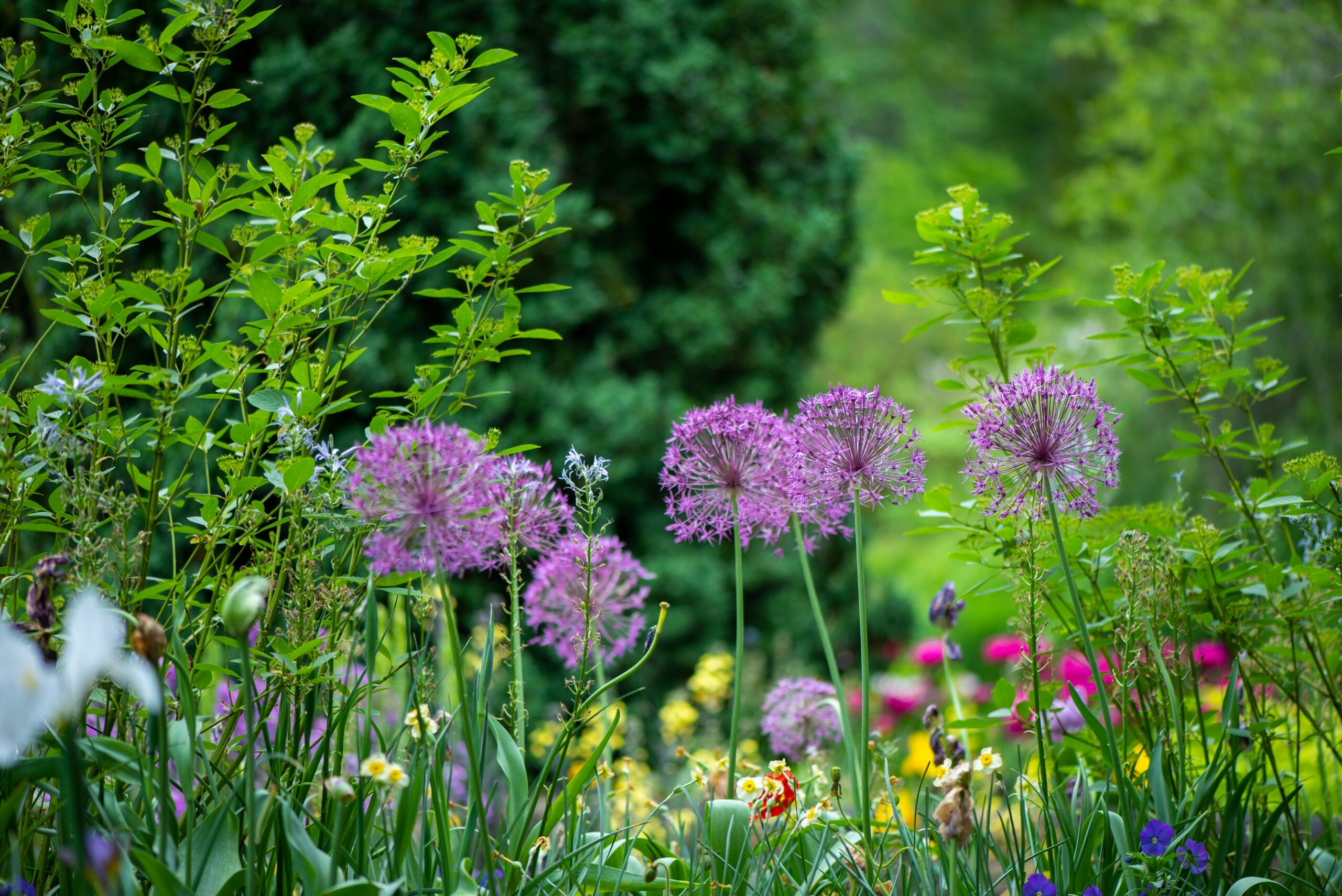
With the days getting longer and daffodils starting to bloom again, there are signs of spring everywhere. Since many green-fingered Brits will be keen to get their gardens looking vibrant and welcoming ahead of BBQ season, now is the perfect time to start the preparations.
The arrival of spring brings warmer temperatures and more sunlight, providing the ideal growing conditions. However, there’s often a lot of confusion around what to plant, how to plant it and when during these months.
To help, we’ve provided a guide full of spring gardening advice and ideas that are guaranteed to get your outdoor space in tip top shape so that it’s thriving come summer.
Spring Gardening Tips
How can I attract pollinators to my garden during the spring
With a variety of different flower shapes, sizes and colours, it’s important to know which plants are going to be the most attractive to pollinators. From bumblebees to honeybees, these insects play a pivotal role in the garden by visiting flowers to collect nectar and pollen.
To attract pollinators, it’s essential to avoid plants with double or multi-petalled flowers such as hydrangeas, petunias and busy lizzie plants as bees may find it difficult to access the nectar.
Instead, opt for flat or shallow blossom plants like daisies, abelia, lungwort and crocus. These more vibrant flowers, with shades of blue, purple and yellow are also more attractive to bees as they can easily perceive these colours.
As pollinators associate the bright, shiny petals with sugar, it’s important to steer clear of darker colours such as reds, as these shades are likely to detract them from the flower and therefore your garden during spring too.
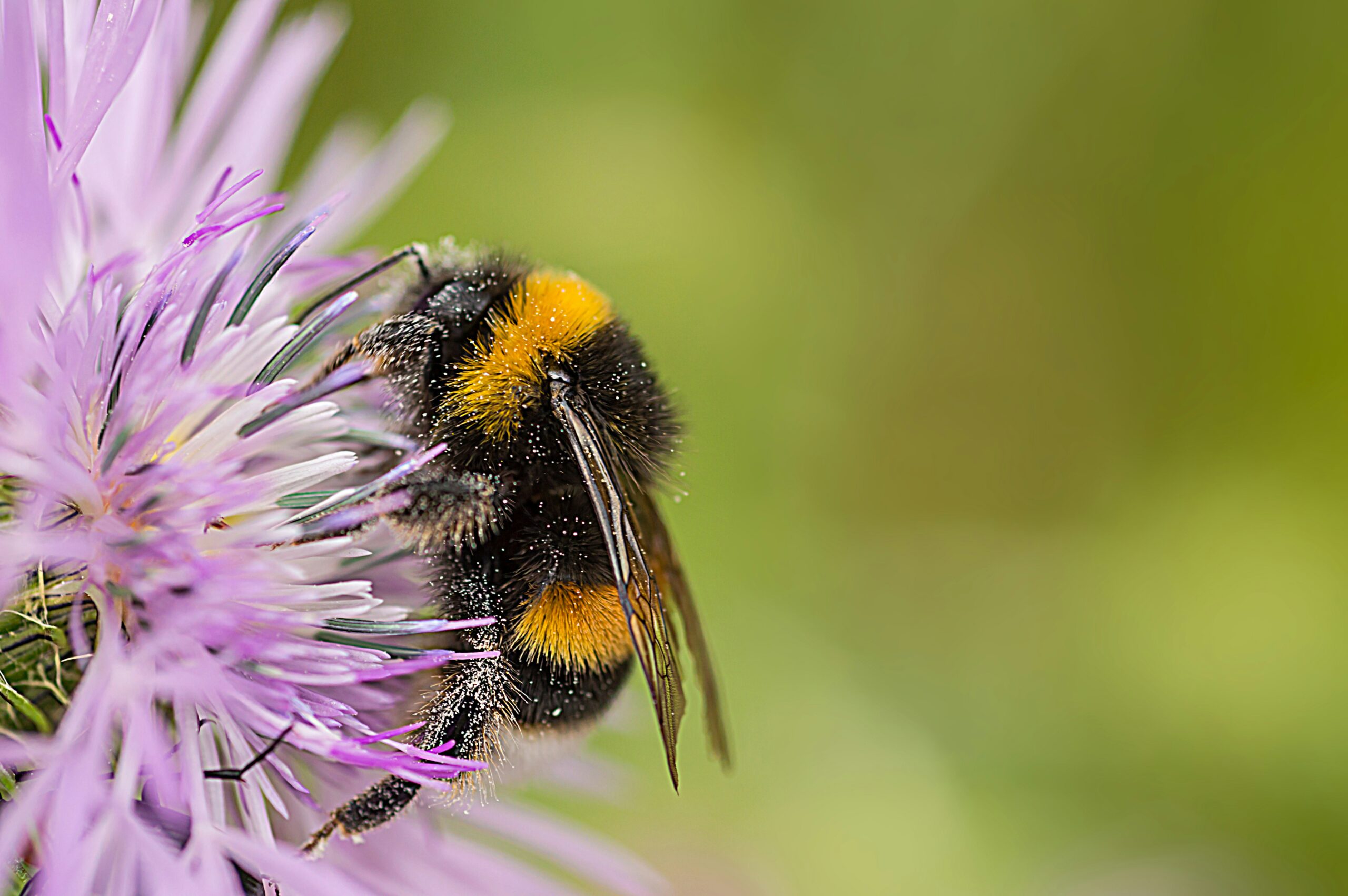
What are the best spring flowers to plant for a colourful garden
For lots of people, gardens are a safe haven away from the business and chaos of day-to-day life.
To keep your mood lifted during spring, don’t underestimate what a big role colour can play in your garden. For instance, early bloomers – such as crocuses – are perfect for adding some brightness to your garden. Coming in a variety of pinks, oranges, yellows, blues and purples, these plants not only look beautiful but are perfect for attracting pollinators.
Helleborus are a wonderful addition to any spring garden too. With green, pink and white blooms, whatever the British weather brings (which in spring – is typically showers), these flowers will help to brighten up any day.
Nothing says it’s spring quite like daffodils either. From early to late flowering types, these jolly blooms will give you that splash of yellow to really help your garden ‘spring’ to life.
Why should I clean my greenhouse in spring
Greenhouses nurture plants, but also pests and diseases if they aren’t cleaned prior to the growing season. No matter whether your greenhouse is glass or plastic, by removing algae, moss and grime, this will automatically help to improve the growing environment for plants by maximising light levels and controlling pests and diseases.
Pick a mild, dry day and empty everything from your greenhouse before you begin to clean. Start by cleaning the frame, staging and guttering to remove any dead plants and dirt, and then move onto the glass.
The most effective way to clean your greenhouse is by mixing warm water and vinegar for cleaning the surfaces, and also getting rid of mould and mildew. If untreated over spring and summer, you can risk damaging plants, infecting soils and generally creating an unhealthy environment which no one wants in their greenhouse.
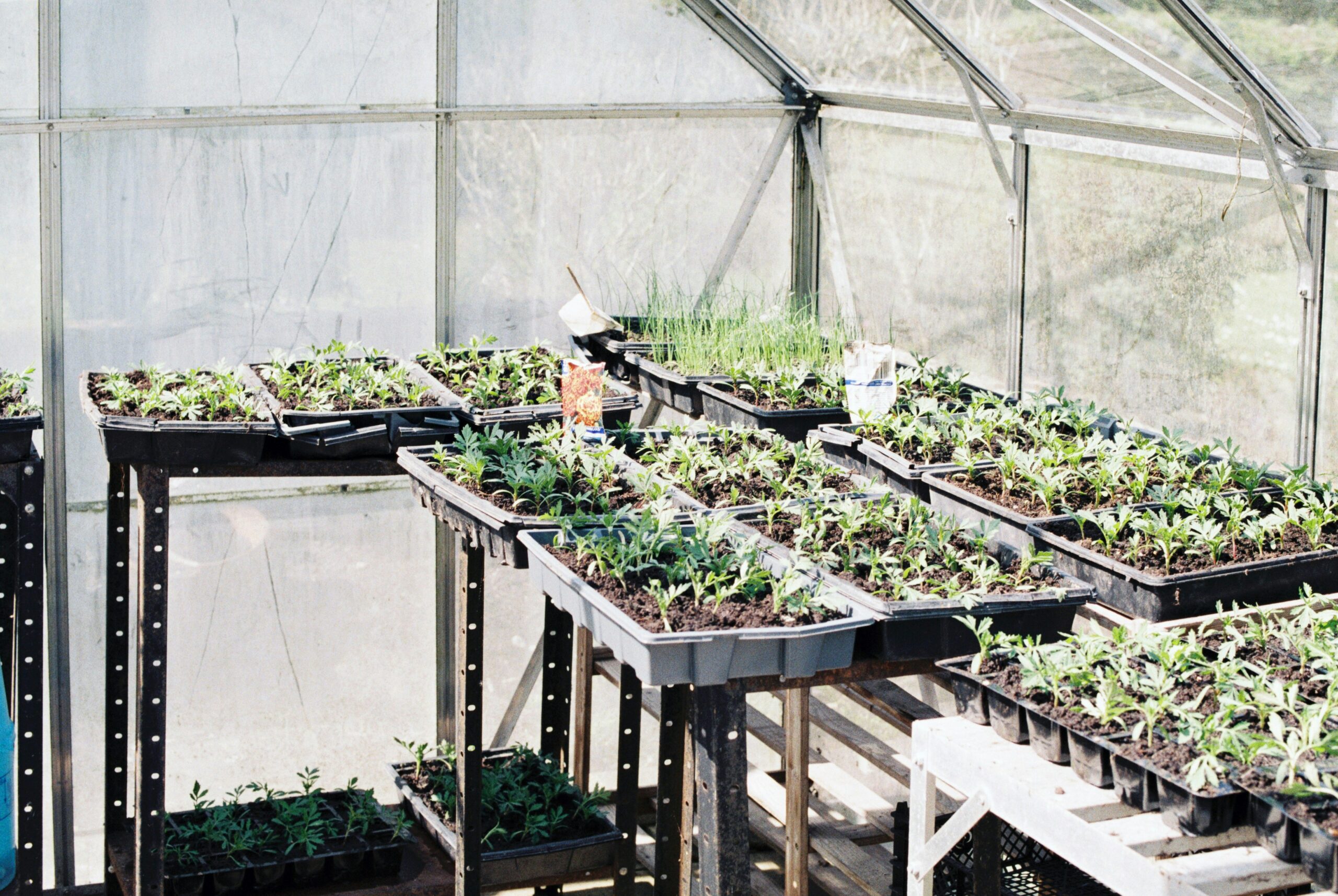
How to mulch my borders in spring
Mulch is used on the top layer of soil to control weeds, regulate temperatures and improve overall soil structure. It’s typically made from wood chips or bark and can be bought in most garden centres or large supermarkets. Applying mulch from mid to late spring is the best time, as it can help soil to retain moisture in the summer.
While there are lots of different types of mulch, they all can be applied in the same way. Start by preparing the ground and removing any weeds, then open up your bag of mulch and lay around 5 cm worth onto the bed or around key plants. Using a narrow spring tine rake or garden fork will be useful when ticking off this gardening job.
Make sure you spread the mulch around so it’s evenly distributed and make a little room around the base of trees and shrubs because you don’t want them in direct contact with it.
How to move my plants to a new location for spring
If you plan to move plants to a new location, first be sure to water the soil thoroughly the day before you move anything, and remove any nearby weeds, as you won’t want to move these along with your plants!
Dig the new hole first to lessen the amount of time the newly dug perennials spend out of the ground, and then start to dig out your plant.
The more root you can take and the less injury done to the root, the easier it is for the plant to reestablish in a new location. Make sure you avoid pulling the plant out by the stems because they may rip off in the process.
Next, gently place the perennial in the hole and adjust as necessary. Backfill soil into the hole around the new transplant until the soil is level with the surrounding ground.
Finally, water in the plant and top dress with 5 cm of mulch to ensure it retains its moisture.

What should I be doing in the garden now (UK)
Now that we’ve survived the harsher winter months, the current state of your garden and all the jobs you need to get done between now and summer may feel like a slightly overwhelming task.
To help figure out exactly where to start (and when), we’ve listed the gardening tasks and planting jobs to prioritise on a month-by-month basis, and there’s no better time to dust off your gardening tools than in spring.
March gardening jobs
With 20th March officially marking the first day of spring, there’s plenty of gardening jobs you can be doing in preparation. For instance, you can plant lilies and other summer flowering bulbs into pots and borders, as well as starting to plant new roses and other shrubs.
Make sure you’re carefully checking any new shoots for aphids – which are sap–sucking insects – and wiping them off before they can multiply and damage your garden. If you’ve never seen aphids before, they are tiny insects with pear-shaped bodies and antennae; often they feed in larger groups so keep an eye out for them and fertilise your plants if it becomes a growing problem.
It’s also a good idea to deadhead any remaining winter bedding plants so they don’t seed and generally give everything a little tidy up by removing established and newly germinating weeds before they take hold.
April gardening jobs
April is the perfect time to start cutting your lawn again, with the milder weather returning and temperatures staying consistently above 8 degrees Celsius. Start by mowing it once a week at the beginning of the month and then increase this to once every four days by the end of April if you can.
As the weather warms up and your grass enters a growth phase, don’t make the mistake of getting overexcited and cutting it too low (below 4 cm). Doing this makes your lawn more susceptible to drought and this is the point at which weeds and moss will take hold.
If you have any, you may want to aerate, scarify and lay some seeds to repair the dead patches in your lawn.
Also prune your hydrangeas in April, making sure you’re pruning in the right way for the type that you have, and protect new shoots of vulnerable plants like delphiniums. It’s also the perfect time to move perennials that you think are in the wrong place and divide them up to encourage new plants to fill your borders. Remember to give everything a good mulch to suppress the weeds and improve the soil!
Aside from planting and gardening, it would also be beneficial to check the guttering on your home, sheds and greenhouses to ensure that any spring showers fill up your water butts, as well as getting your greenhouse clean for the growing season.
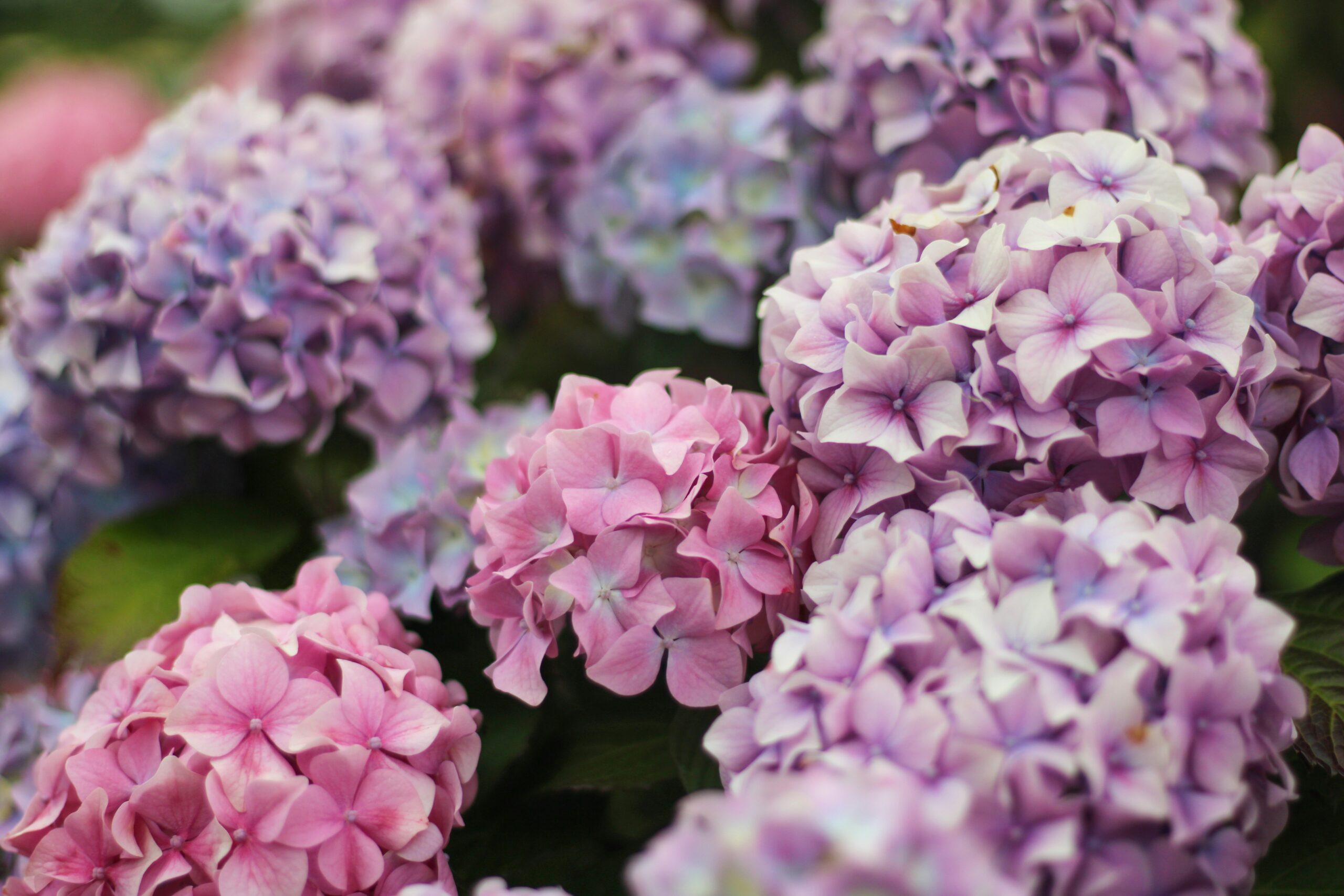
May gardening jobs
In May, the most important thing you can do is ensure that you’ve reseeded your lawn by the end of the month, and have applied a nitrogen rich summer lawn feed to encourage leafy growth.
In terms of general garden maintenance, with the weather warming up now is a good opportunity to give everything in your garden a good clean – from outdoor furniture to paving slabs.
Other gardening jobs include tying in the new shoots of climbing plants like wisteria; planting out summer bedding and tender annuals like sunflowers.
You’ll also need to harden off any tender plants that have been raised indoors but don’t forget to bring them back inside again at night.
Another job you can do in May is going on regular hunts to reduce snail populations, which is even more important during damp weather spells.
June gardening jobs
June 20th marks the final day of spring and the start of summer, and there are plenty of jobs you can be doing in your garden to ensure it’s healthy and thriving.
Start by tying in new stems of climbing and rambling roses to their supports as this will help to encourage even more to grow flowers. Now is also a good time to take softwood cuttings of your hydrangeas – be sure to select non-flowering shoots, which will root fast.
Continue planting summer bedding in pots and borders and water regularly to help plants establish, while pinching out the tips to encourage bushier growth. Also give container displays and hanging baskets a liquid feed every few weeks to encourage flowering and move citrus fruits outside now that the temperatures have warmed up.
Get into the habit of watering plants daily in June, ideally in the evening or early morning at their base. Even though it’s very likely that they’ll need a water this time of year, it’s good practice to always check the soil first.
Also, don’t forget to water your houseplants more regularly as the temperatures warm and light levels increase. Some house plants are particularly prone to collecting dust on their leaves so be sure to give these a wipe regularly.
The 2024/25 gardening calendar
Month | Plants | Gardening jobs | Planting tips |
| January | Bare-root trees, bulbs, fruit trees, grapes | Prune and winter wash fruit trees to control pests and diseases, prepare soil for spring | Ensure proper drainage for bulbs. Water newly planted trees |
| February | Snowdrops, early veg, wisteria, ivy | Clean garden beds, sow seeds indoors | Protect young plants from frost. Use row covers if needed. Sprinkle slow release fertiliser around the base of flowering shrubs |
| March | Spring flowers, herbs, lilies | Start planting seeds outdoors, weed control, finish pruning roses, deadhead any remaining winter bedding plants | Harden off indoor plants before transplanting. Mulch soil. Start planting seeds and check new shoots for aphids and wipe them off before they can multiply |
| April | Perennials, berries, hydrangeas | Lawn care, protect new shoots of vulnerable plants, fertilise, weed prevention, move perennials | Water deeply after planting. Add organic matter to the soil. Prevent weeds. You can’t over water plants in terms of quantity of water, just make sure it has the ability to drain |
| May | Annuals, tomatoes, lavender, wisteria, sunflowers | Prune shrubs, check irrigation systems, tie in the new shoots of climbing plants | Plant tomatoes deep for stability. Stake tall plants early. Prune shrubs. Prune lavender now to stop it going leggy. Reseed lawn and apply a nitrogen rich summer lawn feed to encourage leafy growth |
| June | Roses, summer veggies, citrus trees, olive trees | Deadhead flowers, mulch, monitor pests, continue planting summer bedding plants, move citrus trees outside | Tie in the new stems of climbing and rambling roses horizontally. Allow good air circulation around roses. Mulch to conserve moisture. Water plants daily in the warm weather |
| July | Lavender, herbs, strawberry runners, apples | Harvest herbs, water efficiently, thin out heavy crops of apples, pears and plums and remove any damaged or undersized fruit | Prune lavender after flowering. Make sure on the inside of the plant it’s not already spindly. Water in the morning or evening |
| August | Sunflowers, fall crops, perennials, fruit trees | Clean up flower beds, prepare for fall, deadhead perennials, collect seeds as they ripen, summer prune restricted form fruit trees | Pinch back sunflowers for bushier growth. Plant autumn veggies early |
| September | Winter squash, daffodils, roses | Divide perennials, plant spring bulbs, plant daffodils but not tulips, sow hardy annuals, tie in climbing roses, raise the height of your lawn, reduce the frequency of houseplant watering | Place compost in pots and pull apart perennials. Plant bulbs at the right depth. Water newly planted perennials thoroughly. Daffodil foliage tends to get floppy, but it’s best not to tie or braid the leaves |
| October | Pansies, fig trees, evergreen shrubs | Rake leaves, store fallen leaves in bags for leaf mould, insulate plants for winter, remove large fruits on fig trees that have failed to ripen | Plant pansies in well-draining soil. Mulch garlic for winter protection. Raise pots up onto feet to prevent water logging |
| November | Evergreens, shrubs, tulips, garlic and onions | Prune fruit bushes, winterise tools and equipment, cut down faded perennials, tidy up strawberry beds | Water evergreens deeply before the ground freezes. Plant bare-root hedging, roses and shrubs before the weather turns really cold. Mulch around shrubs and replenish gravel mulch around alpines |
| December | Holly, winter greens, bare-root roses | Plan for next year, check winter protection, move plants in pots to a sheltered spot if weather turns extra cold, hard prune overgrown shrubs | Protect plants from extreme cold. Insulate with burlap or similar material. Cut stems of berried winter shrubs and seasonal flowers |
Spring garden ideas
With the sun finally shining again, often people feel inspired to give their garden a bit of a glow up in spring. But with so many different garden design ideas and styles out there, it’s not always easy to know what’s achievable for your space – or where to begin.
Below, we’ve provided some practical spring garden ideas that will elevate your outdoor space, without breaking the bank.
1. Gravel your garden
Not only is it affordable, but opting for gravel in your garden is easy to lay, low maintenance and can also look very sophisticated.
You may need to dust the gravel and pebbles every now and then, but other than the occasional bit of weeding, that’s mostly the extent of all maintenance. By having no soil, the gravel acts as a barrier to germinating any weed seeds.
Gravel also comes in a wide variety of colours, shapes and sizes, which can add some texture and personality to your outdoor space ahead of the hosting months in summer. Whether you’re looking for smaller pebbles for a more subtle look or larger pebbles instead, there’s something for everyone.
It also ranges from marble, to slate, granite, pea and decomposed granite, so it’s important to do some thorough research and way up your preferences before going full steam ahead on this transformation.
2. Transform your garden with paint
Doing up your garden in spring doesn’t have to come at a huge cost to your bank balance either. Instead, you can completely transform the look of your outdoor space simply by using paint.
Whether you add a fresh lick of paint to your shed to refresh its weathered look or opt for a new colour for your fence to reflect the warmer months ahead, there are many options to choose from. For instance, colours such as royal blue, light green and sunshine yellow are often associated with the season of spring and can have a striking effect when natural light hits against it.
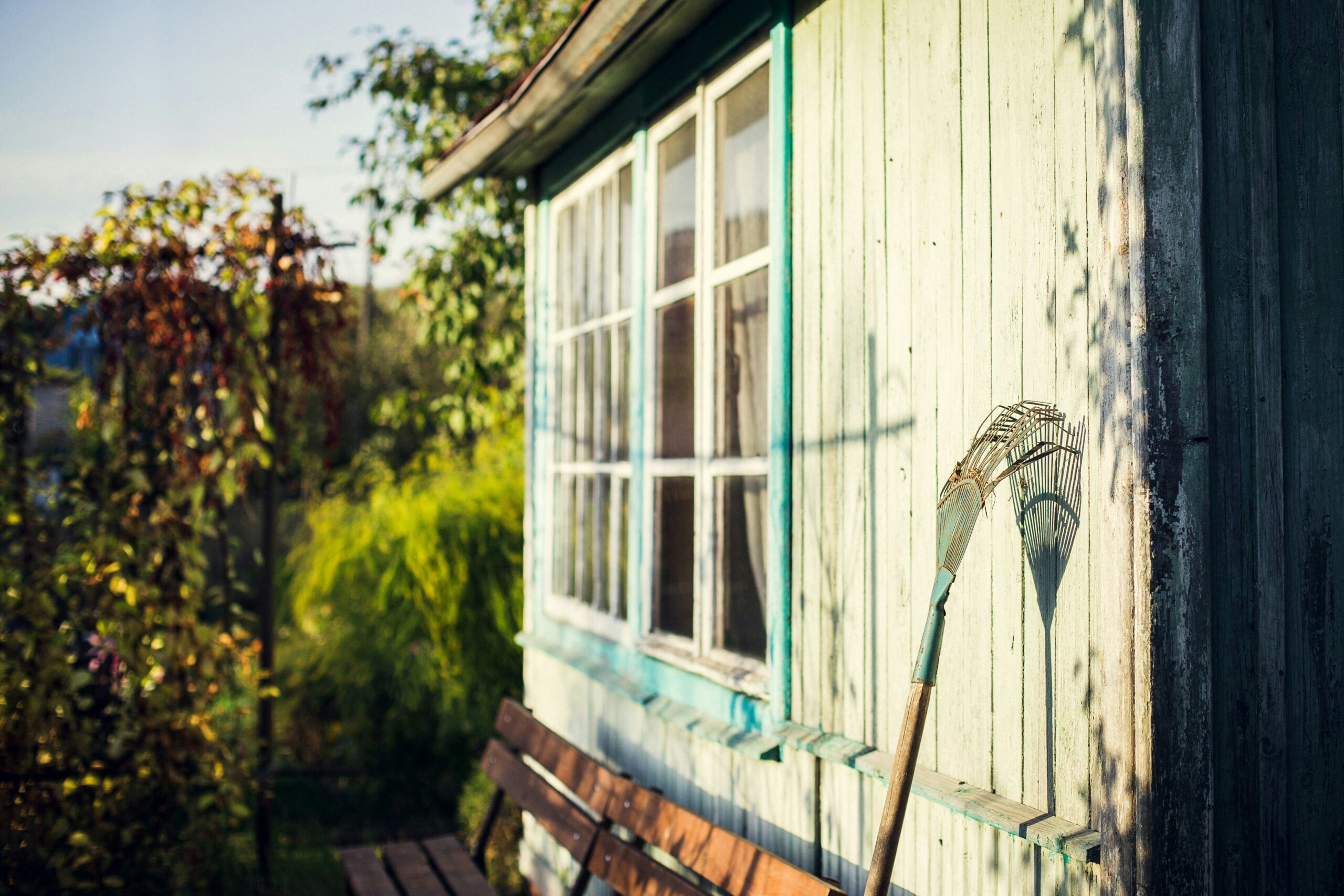
It’s also important to consider the mood you are trying to achieve in your garden when deciding on your paint colour. For instance, if you’re wanting to create a sense of calmness in this space or instead build an ‘active’ hub for socialising with friends, you can change the whole mood of your garden with colour!
Aside from liking the shade itself, if your garden is lacking in square footage then you’ll want to try every trick in the book to make it ‘feel’ bigger before inviting guests round – and the paint colour you choose will play an important role here.
While white is a common colour to use for achieving that fresh look, it’s best to avoid it when it comes to your garden – not only for practical reasons (mainly that dirt is highlighted even more) but a ‘brilliant’ white can look quite stark and create harsh lines for the eye. Instead, it’s safer to opt for off-white or more neutral tones in your garden as these will create a softer environment, opening up the space even more when the sun hits.
Our advice is not to choose any more than two or three main shades, otherwise the colour scheme in your garden may start to lack cohesion. You may also want to consider painting with a colour that co-aligns with any outdoor furniture or garden decor as this will really help to bring the space together.
3. Consider artificial grass
If you are struggling to keep your lawn looking nice all year round, it might be worth considering artificial grass instead. And let’s be honest, there’s no bigger eyesore in a garden than a patch of dead grass.
Moving to artificial grass for your garden doesn’t have to be costly either. For instance, there are a lot of factors that can influence your overall budget, such as your garden size, the cost of fitting the grass and the type of grass you opt for. First things first, order lots of samples before you commit to one, so you’re certain that you’ve found the right shade, material and price point for you.
Artificial grass doesn’t fade in the sun, it’s also low maintenance and pet-friendly too, making it a great option for busy households. The main responsibility once you’ve had artificial grass fitted is keeping it clean and tidy but this is a quick and relatively easy task to stay on top of; all you need is a brush to sweep up any fallen leaves and a pressure washer to remove those tougher stains.
Also, if you plan to put up a pop up gazebo in time for a spring BBQ or garden party this summer, you won’t have to worry about the gazebo damaging your lawn either – or facing the task of repairing it after months of no exposure to sunlight or water.
4. Make your own bird bath
Adding a bird bath into your garden is a great decorative item – and you’ll also have the joy of encouraging more wildlife into your space.
It doesn’t have to be costly either and can be a fun project to work on if you’re able to find a concrete planter on Facebook marketplace, and repurpose it into a homemade bird bath.
However, bear in mind that lots of planters have drainage holes which won’t hold water. If yours does, start by coating it with a non toxic polyurethane sealant and apply 2 – 3 coats to protect the bird bath and stop the water from seeping through the concrete. Then leave to dry overnight.
To fill the hole, use a non-toxic silicone caulk and put it over the bottom of a rock and then place it neatly over the hole. You can also fill it up with stones.
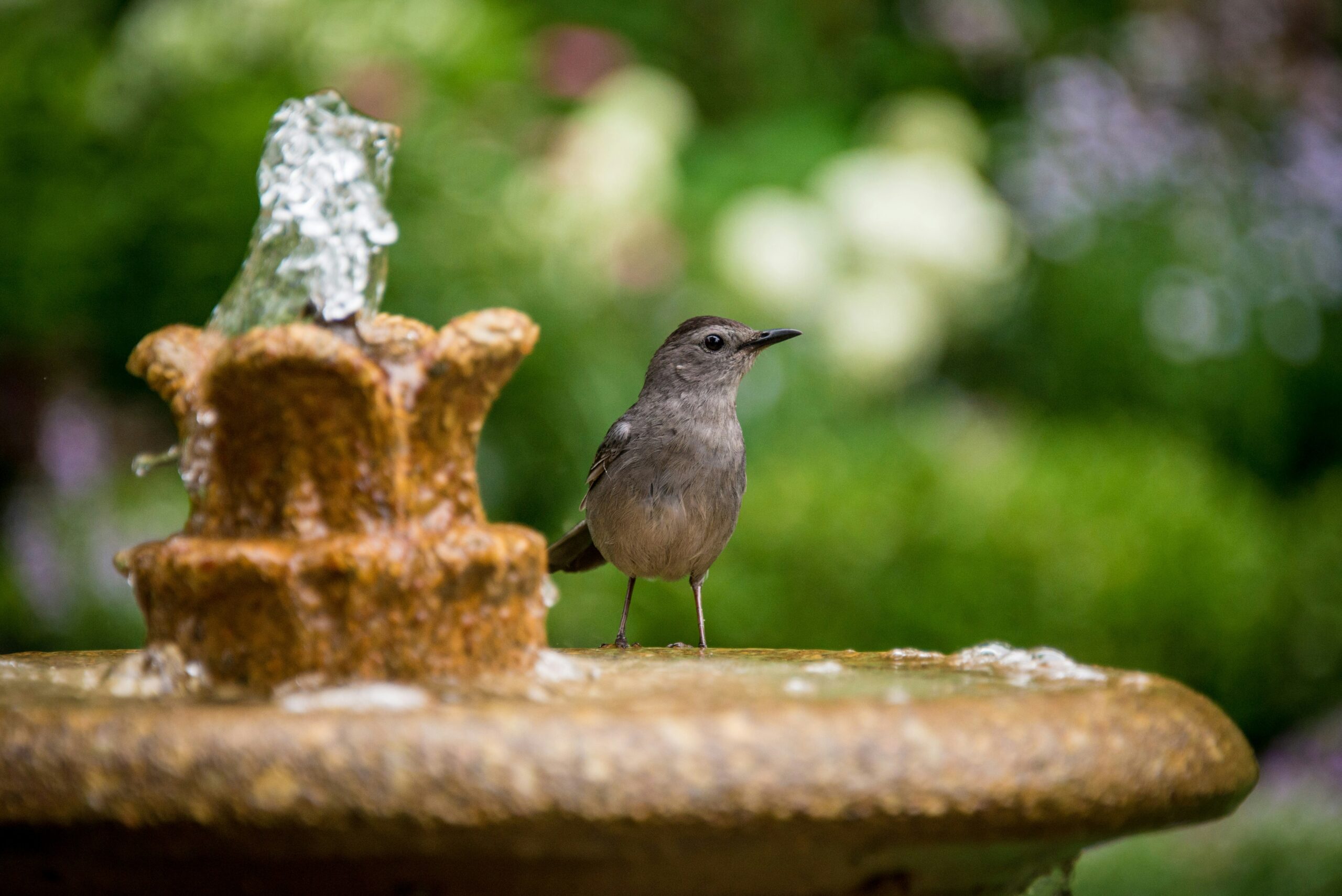
5. Upgrade your patio space
Sometimes all you need is a thorough clean and some stylish decor to completely transform a patio space. To clean, use a broom and strong detergent as well as applying weed preventatives between the joints of your paving slabs. Next, if you have a power wash, it’s worth using this to remove any built-up dirt and ensure the cleaning product has been rinsed away properly.
Once the cleaning is done, consider purchasing an outdoor rug, adding some string fairy lights and getting an outdoor table with chairs to make your garden look even more inviting. You can also accessorise with pots and planters to bring some colour and texture into the space.
If your garden is relatively small, besides using colour to make the space feel bigger, you could also look to bring a mirror outside for a similar effect. Strategically placing a mirror in your garden will help to create the illusion of more space, as well as helping to capture and reflect the natural light, and showing off all the best angles of your planting efforts.
6. Build a Hugelkultur bed
Of German origin, hugelkultur translates to ‘mound or hill culture’ and it’s the process of layering logs, sticks and organic waste into a garden bed.
If you are looking to switch things up in your garden this spring, then using the Hugelkultur method for filling raised garden beds will bring multiple benefits. Not only is it cost efficient since buying bags of soil and compost isn’t cheap, it’s environmentally friendly too as the logs and branches you bury in the ground undergo carbon sequestration. Overtime, it will also help with water retention as Hugelkultur tends to hold water very effectively and will improve your soil too due to how nutrient dense it is.
To build one, firstly you will need to clear the area where you’ll be putting your Hugelkultur bed and make sure it’s level. Then place a single layer of cardboard to keep the weeds at bay and add some big logs, ensuring there are small gaps (roughly 2 inches) between them. Cover this with 1 – 2 inches of soil and then get your hose and water it down so that the soil fills in the small spaces between the wood.
Add medium sized branches and sticks to the soil covered logs and repeat the cover process. Afterwards, add plant waste, leaves and grass clippings and press this down before finally adding compost.
Spring lawn care tips
With the weather not being too intensely hot and your garden receiving regular splashes of rain, spring is the perfect time of year to give your lawn some attention.
From repairing your grass to mowing the perfect lawn height, this section covers everything you need to know for keeping your lawn luscious and healthy.
When to start mowing in spring
It’s best to make the first grass cut of the year in mid-March or early April when temperatures are consistently above 8 degrees Celsius, and from then on mow the lawn at least once a week.
Try to keep your grass at the same height throughout spring and avoid mowing it too short to prevent weeds and moss. For most lawns, the ideal height would be around 4 cm, but if you’ve laid a new lawn this spring, wait until the grass is at least 5 cm tall before you start mowing.
Bear in mind that mowing your grass too early in the morning will not only irritate your neighbours, but it can damage the grass itself by exposing it to disease and fungal infections – the same goes for mowing your lawn late in the day. If you’re able to, the ideal time of day to mow your grass in the warmer months is mid-morning (8 AM – 10 AM).
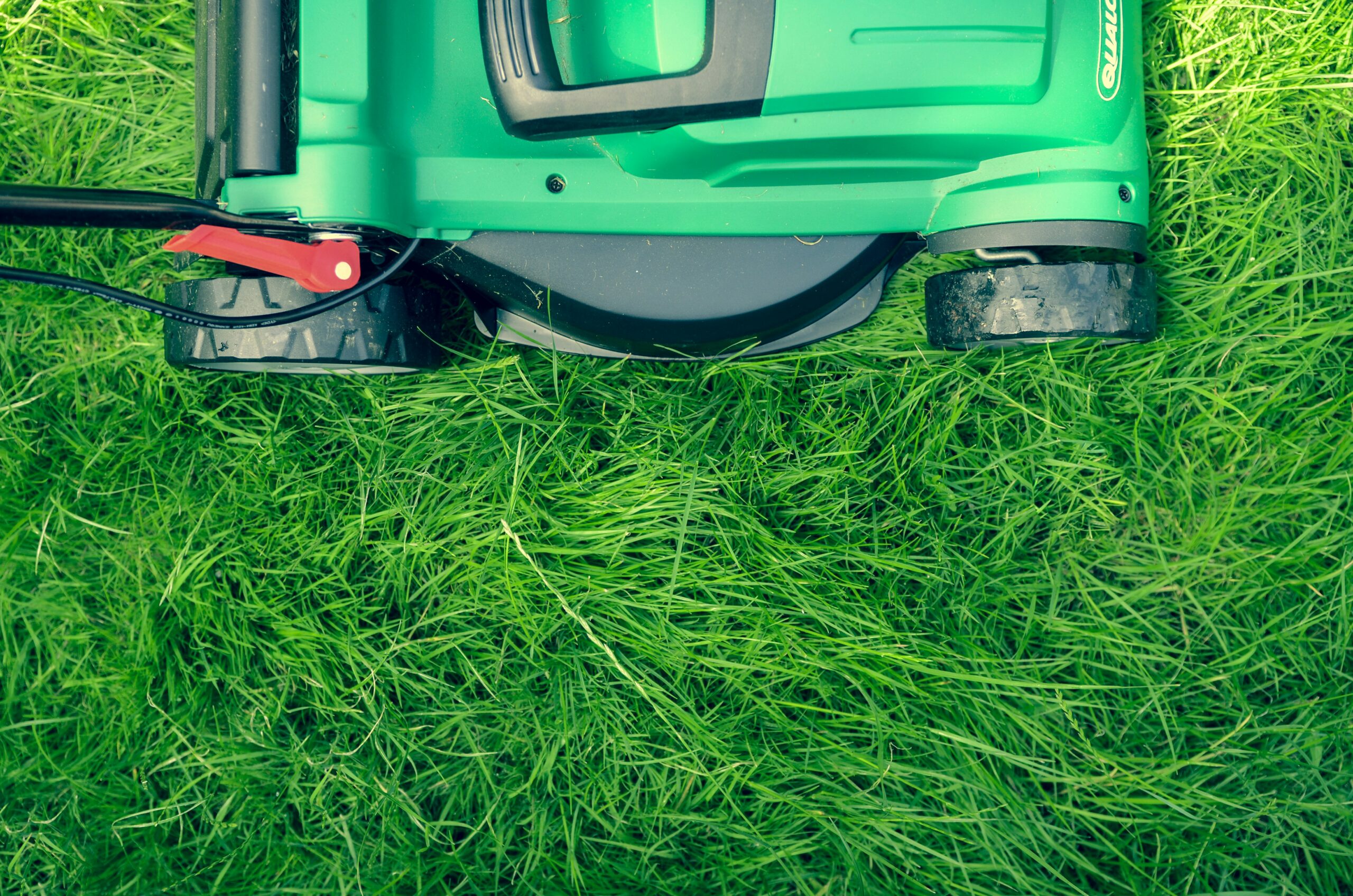
How can I rejuvenate my lawn after winter?
If your lawn is looking a little sorry after winter, you can kick start its recovery by giving your grass a good mow – but make sure this is on a dry day. Then rake away any debris, thatch, moss and dead grass, before adding nutrients to your lawn. Overseed bare patches, apply a balanced fertiliser to promote growth and water it generously.
Following this spring lawn care routine will help to revive the grass and ensure a lush, healthy lawn as the season progresses.
How do I scarify my lawn?
Over time, the base of a lawn can become congested with thatch and moss which inhibits airflow around the grass. Make sure you’re making the process easier for yourself by mowing your lawn before scarifying. Then use a flexible spring tine rake, gently pull the rake back multiple times while criss-crossing your way over the lawn.
If you have a big garden and don’t feel up to hours of manual work, you could use a mechanical scarifier which does the same job as the rake but requires a lot less time and effort. Ensure you’ve set it to the right height as you’ll want to keep some thatch. Then, scoop it up all the debris, aerate and overseed your lawn.
How do I repair patches in my lawn in spring?
Clear out any obvious weeds and dead grass with a rake, then get some compost and an even spread of seeds, and apply it evenly to the soil. Rake this in gently and then lightly firm it with your feet to ensure that there’s contact. The final step is to then spray the area with a hose, but be careful not to push the seeds out in the process.
What temperature should I stop mowing my lawn?
As a general rule of thumb you should avoid using your lawnmower when the temperature consistently drops below 10C. When the temperature dips below this point, the grass will enter its dormant stage and stop growing.
Spring Gardening Checklist
Early Spring: March-April
Inspect the garden:
– Check for winter damage, broken branches and signs of pests or diseases
– Remove any debris or dead plants
Soil preparation:
– Test soil pH and amend if necessary
– Add compost or organic matter to improve soil structure
– Mulch soil
Pruning:
– Prune dormant trees and shrubs before new growth appears
– Cut back ornamental grasses and last year’s perennial foliage
– Deadhead remaining winter bedding plants
Planting:
– Start seeds indoors for later transplanting
– Plant cool-season vegetables like peas, lettuce and radishes directly in the garden
– Harden off indoor plants
– Protect new shoots of vulnerable plants
Lawn care:
– Rake and remove debris to allow for better air circulation
– Apply a balanced fertiliser to promote healthy grass growth
– Scarify your lawn
– Mow your lawn to a height of 4 cm
Mid-Spring: May-June
Flower bed maintenance:
– Divide and transplant perennials
– Deadhead spent flowers for continuous bloom
– Water plants daily as the weather gets warmer
Vegetable gardening:
– Plant warm-season vegetables like tomatoes, peppers and squash
– Mulch around plants to retain moisture and suppress weeds
Weeding:
– Regularly inspect and remove weeds to prevent competition for nutrients
Fertilising:
-Apply a slow-release fertiliser to feed growing plants
Pest control:
– Monitor for pests and take preventive measures like companion planting
– Use organic pest control methods when possible



